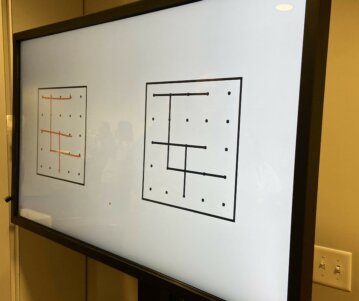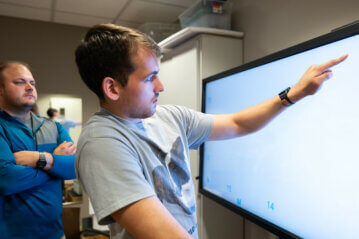We get up in the morning and prepare for our day with only a plan for what it will present. From the moment we open our eyes, we face countless scenarios, decisions, and people—consciously and unconsciously problem-solving and assessing through every step of our day. How many moving pieces do we keep track of even on an “automatic” level? Scientists estimate it is in the millions.
The sheer amount of visual stimuli the mind processes is staggering, yet there are no gaps in processing time from our perspective. We simultaneously and constantly perceive, interpret, and react to our environments.
Now consider how all of that changes after there is an injury to the brain—a disruption in the circuitry that transferred visual stimuli to the brain and was able to so easily manage everything by cognitive processing. What was second nature may be placed in flux.
The ability to perceive and properly process one’s surrounding environment is paramount to how you 
Traditional approaches are made up of simple physical methods and exercises. Clinical sessions may involve a client sitting in front of a large paper, chart, or suspended object—one that has many letters and numbers on it. The client is then prompted to select all of the “As” from the display. The technique is effective in promoting recovery of basic visual perception, but there is little room for variation, and the exercise quickly grows stagnant. Few variations exist, and there are few ways to measure ongoing progress.
Fortunately, as technology has evolved, so too have the devices at clinicians’ disposal. One such device is the Bioness Integrated Therapy System® (BITS). With a wide smart screen, the system has an interactive user interface containing a vast number of coordinated visual and cognitive perception exercises and games for clients.
The screen can be raised or lowered for easy adaptation to users accessing it via a wheelchair or seated position as well as standing or supported-standing positions. Perhaps the most exciting aspect of BITS is the ability to integrate physical, occupational, and speech therapies into one session, maximizing the rehabilitation opportunity.
Each user has a profile on which data from previous sessions are stored. After logging in, the user has the option of several interactive games that pair pattern sequencing with visual tracking. While simple sounding, these games offer crucial, complex exercises challenging the user in dynamic ways. One of the games consists of colored balls (default set to red, white, and blue) rotating in a circular motion on the screen. The client must select the balls in the order first presented when starting the game (such as first white, second red, and third blue). As balls are selected in sequence and disappear, clients utilize their physical strength over a wider range of space—perhaps having to select the first ball from the right side of the screen and the next from the left side.
After each exercise, the BITS system displays data or statistics showing performance accuracy for variables such as the time for completion and the percent of incorrect sequences or times when a client hit a portion of the screen that was not a ball.
“A great thing we can do following the completion of a game is to record the session as a ‘baseline,’ which we can return to for future assessments,” says occupational therapist Sara Waid. “This allows us to track a client’s progress over time, seeing exactly how they improve, which leads to options for other exercises to further their success.”
Another game is “Geoboard.” It starts with a board with a row of dots displaying a pattern of lines. At its default, dots appear for five seconds before disappearing. A board will then appear on the right side of the
A unique pairing of the BITS is the linking of assessment components to other programs at QLI. One of the most complex demands of the driving program requires determining a path between two points. A BITS cognitive assessment that rebuilds pathfinding skills consists of multiple circles on the screen with thirteen dots having the numbers 1-13 in their center and another thirteen having the letters A-L. To complete the assessment, the client must draw a line from the “1” to the “A” and then to the “2” and the “B,” continuing in this fashion until every letter and number has been connected. Not only does this require the client to scan the entirety of the screen to find the corresponding letters and numbers, but it allows the clinician to see how the client responds to the alternating patterns.
A plethora of other exercises are also available, including those that require the user to scan for and select specific items on a cluttered screen. “There are many questions we can ask once this game is completed,” says Waid. “Is the client’s selection process organized, moving directionally from left to right? Or, is it disorganized, moving indiscriminately around the screen and making errors?”

For further information on our brain injury rehabilitation program, click here.
Categories: Brain Injury, Neuroscience, Visual Therapy
